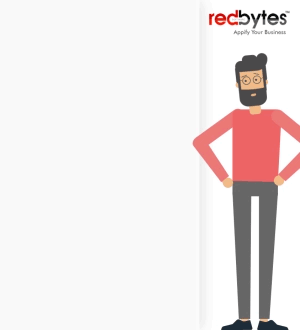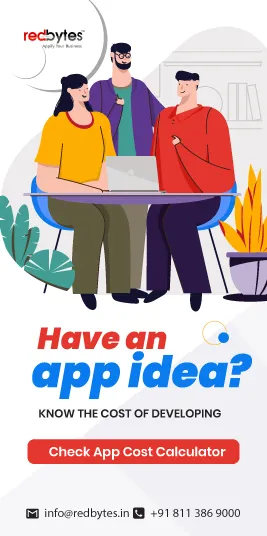Do you think developing an app is the hardest part? Think again.
You may have the app ready for your audience to download, but how are you going to make money off it? You can safely assume that figuring out your mobile app business model or its monetization strategy is the most difficult bit of ensuring that your app start-up is a success.
It is the most critical element in the entire equation and possibly the most overlooked too. It is essential to remember that the faster you start generating revenue from your application, the easier it will be for you to sustain the growth of your app start-up financially.
Most importantly, in the absence of a monetization plan for your application, ultimately you end up in limited access to investor capital. Without a cohesive revenue strategy in place, after a while, you will find your application going downhill, especially with so much competition in the space.
A cardinal mistake that most founding teams tend to make is by not focussing on perfecting the business model behind the application. Do not allow yourself to commit the same error.
Fundamentals of Mobile App Business Model
You can hit the ground running once you have implemented your mobile app business model. It is not as bad a blindly firing at a target. There are several tried and tested methods that have proven to be successful revenue generation models in the long run.
It is not about being too complex or sophisticated either. All you need is something simple which you can easily understand and familiarise yourself with and your team with.
It is always prudent to start with the basics of app monetization. Having a large userbase that does not make you any money is not going to help you sustain your app start-up for long. You will need to have a strong app monetisation approach in place which will determine your success.

What you need to concentrate on it to convert your existing app users into paying customers which will allow you to start earning a return on your investment. However, without a large user base, earning a profit is impossible.
Before going live, you can have a few business models that you can try out. Look at the results and optimize the model that works for you. The idea is to raise the performance standards and ensuring that you can meet the demands of your customers simultaneously.
In the ideal scenario, you want to introduce a mobile app business model that is still profitable even if you do not have an extensive userbase. Since ideal is not always doable, let’s take a look at some of the app monetization models that you can explore.
Read Also: 12 Biggest App Marketing Mistakes That Will Kill Your Brand
1) Freemium

Freemium apps have proven to be one of the most scalable and effective app monetization strategies in the last few years. Enticing your users to access the freemium app with limited features encourages them to purchase the full-fledged version if they like it.
The model has worked for several app start-ups as your users get a taste of the core competencies of the application and have a comprehensive understating of its offerings and value. To access the remaining features, they are more than happy to pay a price for it.
Allowing free version downloads is extremely powerful since your target audience will not think a lot about it too much. Once they get used to the basic app offerings and want more, that’s the right time to push them towards the premium paid app version.
The barrier to entry at this point for new users is quite low. Therefore, the focus of the business model is to keep acquiring new app users who will find the app beneficial. Not that you require a million app installs to generate revenue. That’s the beauty of freemium apps. However, there are two monetization routes that you can adopt:
- Subscription Fees: With this mobile app business model in place, you can keep charging a select group of customers continuously until they choose to cancel.
- One-Off Payments: Your users pay a one-time fee at the time of upgrading their application from the freemium to the premium version.
Freemium apps can also help you understand if your target audience is taking to the application. It is a great tool to test which features are working for you and if they are at all willing to pay for an upgrade.
The freemium model can be implemented in several ways. Take a look.
- Feature-led Freemium offers a free version of your application with restricted access to its features.
- Capacity Limited Freemium enables full access to the application even in the free model but only until it reaches its designated capacity.
- Limited Time Offer Freemium is using the application on a free trial model for a specified period.
2) Virtual Goods with In-App Purchases (The Addictive Model)

A popular app monetization strategy in recent times is to develop an addictive app that includes in-app purchases. This model works well because it is simple, versatile and scalable.
To entice the customer, the addictive app permits the user for value advancement with the help of some type of in-app virtual goods. This is what makes this model so successful.
Games and gamification apps have been known to use this strategy frequently. The user will only purchase if the virtual goods being sold offers high value. Make sure that the value proposition is clearly defined as that is going to be the key driving force behind the user incentivizing the user to spend money within the app.
While the gaming segment has done well with this monetization formula, in recent times, other types of apps are also experimenting with this mobile app business model approach.
To ensure that this strategy is a success, your app needs a considerable user base that will help in the process of generating a sizable return. Therefore, customer acquisition on an ongoing basis is an absolute must.
Do not overcomplicate with multiple purchase options that reward the user. Have a selective range and see how the users respond. This strategy allows you the opportunity to be creative. Take advantage of it and make sure that the features you have on offer add significant value.
Read Also: 10 Ways to Raise Fund for Your App Startup
3) Advertising and Sponsorship

This method of app monetization through sponsorships is extremely profitable for those start-ups that have over 125,000 monthly active app users. Any app with an audience size less than that will find it hard to generate adequate revenue to sustain the growth of the app business.
Most importantly, the users must frequently interact with the app that ensures the generation of revenue that is consistent and substantial.
It is well worth your time to remember that too much advertising can alienate your audience too. Some can even be slightly overwhelmed with this bombardment. Whilst advertising is meant to offer a more dramatic user experience, it only works well if the exposure is in moderation.
Smartphone users today have known to be somewhat averse to too much advertising as it does kind of have an intrusive feel to it. Ultimately, you do not want over usage to ruin the user experience.
Therefore, when adopting this style of app monetiszation, companies need to take on a more strategic approach without damaging the user experience or completely putting them off your app for good.
4) Paid Apps

The simplest and most convenient way to make money off your application is to offer your app install against a payment. Hence, every single time that a user downloads the app, you generate revenue automatically. Generally, this is against a fixed, one-time payment that gives access to the application until such time that is it active.
For many start-ups, this can be a very mobile app business model as the strategy is extremely transparent. The users get into the game knowing fullwell what he or she expects to get in return for this price.
Remember that revenue generation in this monetization model is a direct outcome of the number of users that are convinced that your app offers a value add to their needs which is why they would be willing to pay for the download.
Unquestionably, you need a significantly large user base to be convinced about this to make a substantial profit. Plus, you will have to continue with your user acquisition marketing efforts and keep adding new members into the network. The sustainability of your business in the future depends on how successfully you execute these key tasks.
The customer lifetime value is not really of consequence in this standalone model since the one-time payment approach leaves little room for the paid member to generate additional income for the business. Also, the competition is quite fierce since there is no shortage of free apps which may make it difficult for the users to be easily convinced to pay for it.
A strong brand presence must be built around it . Keep educating your prospective customers through continued marketing efforts using all channels including print, digital, social media, e-mail, etc.
Alternative & Additional Monetization Strategies
If you want your app to start making profit, it is best to go with a mix of monetization strategies instead of just focussing on a single business model. Other than the revenue generation channels already outlined, you can also think of including alternative and additional strategies to increase your prospects of profiteering.
Take a look.
- In-App Affiliate Marketing: With a specific user base in place, make use of affiliate marketing that enables you to advertise and sell third party products to them through your application platform. With every sale made through your channel, you will earn a handsome commission.
- Lead Generation: With access to a significant chunk of user data including names and e-mails to demographic features, etc. you can offer this information to third-party entities for a price. This allows these external bodies to use the data to understand user behavior and help them improve their purchase processes for their products and services. However, before you tread this path, ensure that you have taken permission from your user to share their data with other third-party bodies.
Read Also: Mobile App Marketing Funnel: Converting Users into Customers
What Monetization Model Should You Choose?
Whichever mobile app business model you choose to adopt, the end goal should be to generate revenue in a manner that is efficient and effective. Experiment and test out the waters with a lean strategy and evaluate the insights to build on a more robust approach.

The idea is to have a mix of strategies with minimal effort and maximum returns. Start small and fine-tune your monetization plan over a short span of time.














